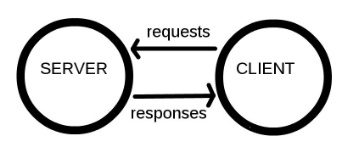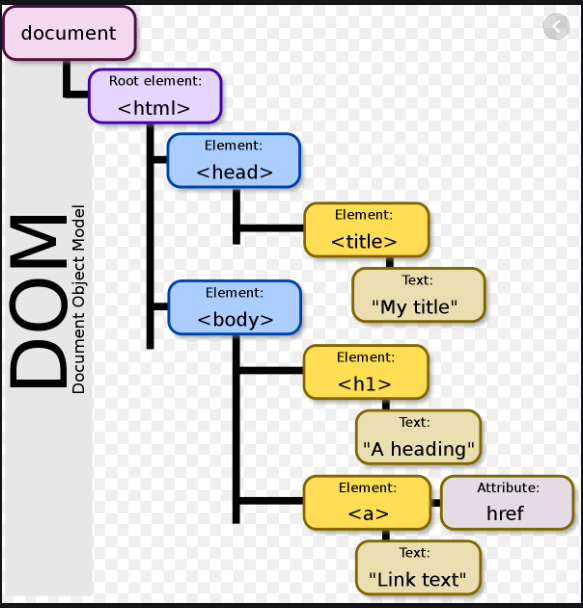
Lecture 15
Primer on Web-scrapping
March 12, 2025
Premier on Web-scrapping
Ethical considerations
“If you can see things in your web browser, you can scrape them.”
- Just because you can scrape them doesn’t mean you should.
- In US, it is currently legal to scrape data from the web using automated tools, as long as the data are publicly available.
- It is important to realize that the web scrapping tools are very powerful.
- It is pretty straightforward to write up a program that can overwhelm a host server.
- The host server tends to have built-in safeguards that will block you in case of a suspected malicious attack.
Ethical considerations
- Respect for website owners’ terms of service.
- Respect for copyright and intellectual property.
- Respect for client servers.
- Respect for privacy.
Clients and servers

- Computers connected to the web are called clients and servers.
Clients are the typical web user’s internet-connected devices (e.g., a computer connected to Wi-Fi) and web-accessing software available on those devices (e.g., Firefox, Chrome).
Servers are computers that store webpages, sites, or apps.
When a client device wants to access a webpage, a copy of the webpage is downloaded from the server onto the client machine to be displayed in the user’s web browser.
Hypertext Transfer Protocol Secure (HTTPS)
Hypertext Transfer Protocol (HTTP) is a language for clients and servers to speak to each other.
Hypertext Transfer Protocol Secure (HTTPS) is an encrypted version of HTTP that provides secure communication between them.
When we type a web address with “https://” into our browser:
- The browser finds the address of the server that hosts the website.
- The browser and server establish a secure connection.
- The browser sends an HTTPS request to the server, asking for the website’s content.
- If the server approves the request, it responds with a 200 OK message and sends the encrypted website data to the client.
- The browser decrypts and displays the website securely.
HTTP Status Codes
URL

An uniform resource locator (URL)—commonly know as a “web address”, specifies the location of a resource (such as a web page) on the internet.
An URL is usually composed of 5 parts
- The 4th part, the “query string”, contains one or more parameters — in this case, there are two parameters:
idandcat. - The 5th part, the “fragment”, is an internal page reference and may not be present.
- The 4th part, the “query string”, contains one or more parameters — in this case, there are two parameters:
HTML
- Hyper Text Markup Language (HTML) is the standard markup language for creating Web pages.
- HTML describes the structure of a Web page.
- HTML consists of a series of elements.
- HTML elements tell the browser how to display the content.
- HTML describes the structure of a Web page.
- HTML elements label pieces of content such as “this is a heading”, “this is a paragraph”, “this is a link”, etc.
HTML Example
- Below is a simple HTML document:
HTML Elements
tagname
- An HTML element is defined by a start tag, some content, and an end tag:
HTML Elements
<!DOCTYPE html>declaration defines that this document is an HTML document.<html>element is the root element of an HTML page.<head>element contains meta information about the HTML page.<title>element specifies a title for the HTML page.<title>is shown in the browser’s title bar or in the page’s tab.
<body>element defines the document’s body, and is a container for all the visible contents, such as headings, paragraphs, images, hyperlinks, tables, lists, etc.<h1>element defines a large heading.<p>element defines a paragraph.
HTML body
<a>
- The
<a>tag defines an HTML link.
<img>
- The
<img>tag defines an HTML image.
HTML Tables
<table>tag defines an HTML table.<tr>tag defines each table row.<th>tag defines each table header.<td>tag defines each data/cell.
HTML Table Examples
- Below is the example HTML table:
HTML Lists
Unordered lists
<ul>tag defines an unordered lists.<li>tag defines each list item.- The list items will be marked with bullets (small black circles) by default.
HTML Lists
Ordered lists
<ol>tag defines an ordered lists.<li>tag defines each list item.- The list items will be marked with numbers by default.
<div> – Block-Level Container
<div style="background-color:black;color:white;padding:20px;">
<h2>London</h2>
<p>London is the capital city of England. It is the most populous city in the United Kingdom, with a metropolitan area of over 13 million inhabitants.</p>
</div>- Block-level element → Starts on a new line and stretches to the full width.
- Used as a container for structuring content.
- Has no required attributes, but
style,class, andidare commonly used.
<div>is used when grouping multiple elements together.
<span> – Inline Container
<p>My mother has <span style="color:blue;font-weight:bold">blue</span> eyes and my father has <span style="color:darkolivegreen;font-weight:bold">dark green</span> eyes.</p>- Inline element → Does not start on a new line; only takes up as much space as necessary.
- Used to apply styling or scripting to specific text portions.
- Has no required attributes, but style, class, and id are commonly used.
<span>is used when styling or modifying a small part of text inside a block.
HTML source code
- HTML elements can be nested (this means that elements can contain other elements).
- All HTML documents consist of nested HTML elements.
- We can view HTML source for web page.
- Hit F12 key (in Chrome or FireFox).
- Right-click in an HTML page and select
View Page Source(in Chrome), or similar in other browsers. - Right-click on an element (or a blank area), and choose
InspectorInspect Elementto see what elements are made up of.
HTML Source Code: DOM
To parse HTML, it is convenient to represent our HTML document as a tree-like structure that contains information in nodes and links information through branches.
This tree-like structure is called the Document Object Model (DOM).
- DOM is a cross-platform and language-independent interface that treats an XML (eXtensible Markup Language) or HTML document as a tree structure wherein each node is an object representing a part of the document.
HTML Source Code: DOM

HTML Source Code: DOM

JavaScript (JS) – Adding Interactivity
- JavaScript (JS) is a client-side programming language that enhances web interactivity.
- It runs directly in the user’s browser, reducing server load.
- JS is often used with third-party libraries to expand website functionality.
- It enables dynamic content, user interactions, and animations.
Cascading Style Sheets (CSS) – Styling the Web
- CSS is used to design and format the layout of a webpage.
- It controls colors, fonts, text size, background, spacing, and display properties.
- Analogy:
- HTML = The structure of a house (walls, roof, foundation).
- CSS = The decoration (paint, carpet, wallpapers).
- JS = The interactive elements (automatic doors, lights, smart devices).
- HTML = The structure of a house (walls, roof, foundation).
- ✅ Together, HTML, CSS, and JS form the foundation of modern web development.